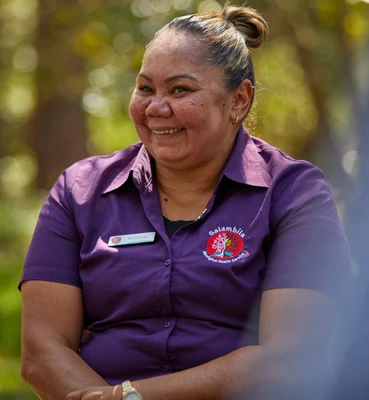Profile and statistics
Cancer screening participation rates for the Aboriginal and Torres Strait Islander community
Bowel cancer
Bowel cancer is the second biggest cancer killer in Australia, yet if found early 90% of bowel cancers can be treated successfully. Aboriginal and/or Torres Strait Islander participation in the National Bowel Cancer Screening Program (NBCSP) is low in comparison to the non-Indigenous population.
The lower uptake of screening by Aboriginal and/or Torres Strait Islander people may lead to bowel cancer being diagnosed at more advanced stages when treatment is less likely to be successful. According to data from the AIHW, only 1 in 5 Aboriginal and/or Torres Strait Islander people aged 50 to 74 take part in the National Bowel Cancer Screening Program – less than half the rate of non-Indigenous Australians.

Breast cancer
Breast cancer is the most common cancer amongst Victorian Aboriginal and/or Torres Strait Islander women.

Cervical cancer
Incidence of cervical cancer in Aboriginal and/or Torres Strait Islander women is more than two times that of non-Indigenous women, and mortality more than three times the non-Indigenous rate.1
There is limited data on the cervical screening participation of Aboriginal and/or Torres Strait Islander women, as this is not routinely collected and reported across Australia. However, recent data from the National Cervical Screening Program shows that just 27% of regular female Indigenous clients had a cervical screening test in the past two years.1
A data linkage study in Queensland demonstrated that two-year participation was more than 20% lower for Indigenous women than for non-Indigenous women there.2 It is likely that the higher incidence of and mortality from cervical cancer amongst Aboriginal and/or Torres Strait Islander women is linked to under-screening and late detection of pre-cancerous lesions and HPV.
References
1. Australian Institute of Health & Welfare, Cervical screening in Australia 2019
2. Whop LJ et al. The first comprehensive report on Indigenous Australian women's inequalities in cervical screening: A retrospective registry cohort study in Queensland, Australia (2000-2011). Cancer, 2016. 122 (10): p. 1560-9.
